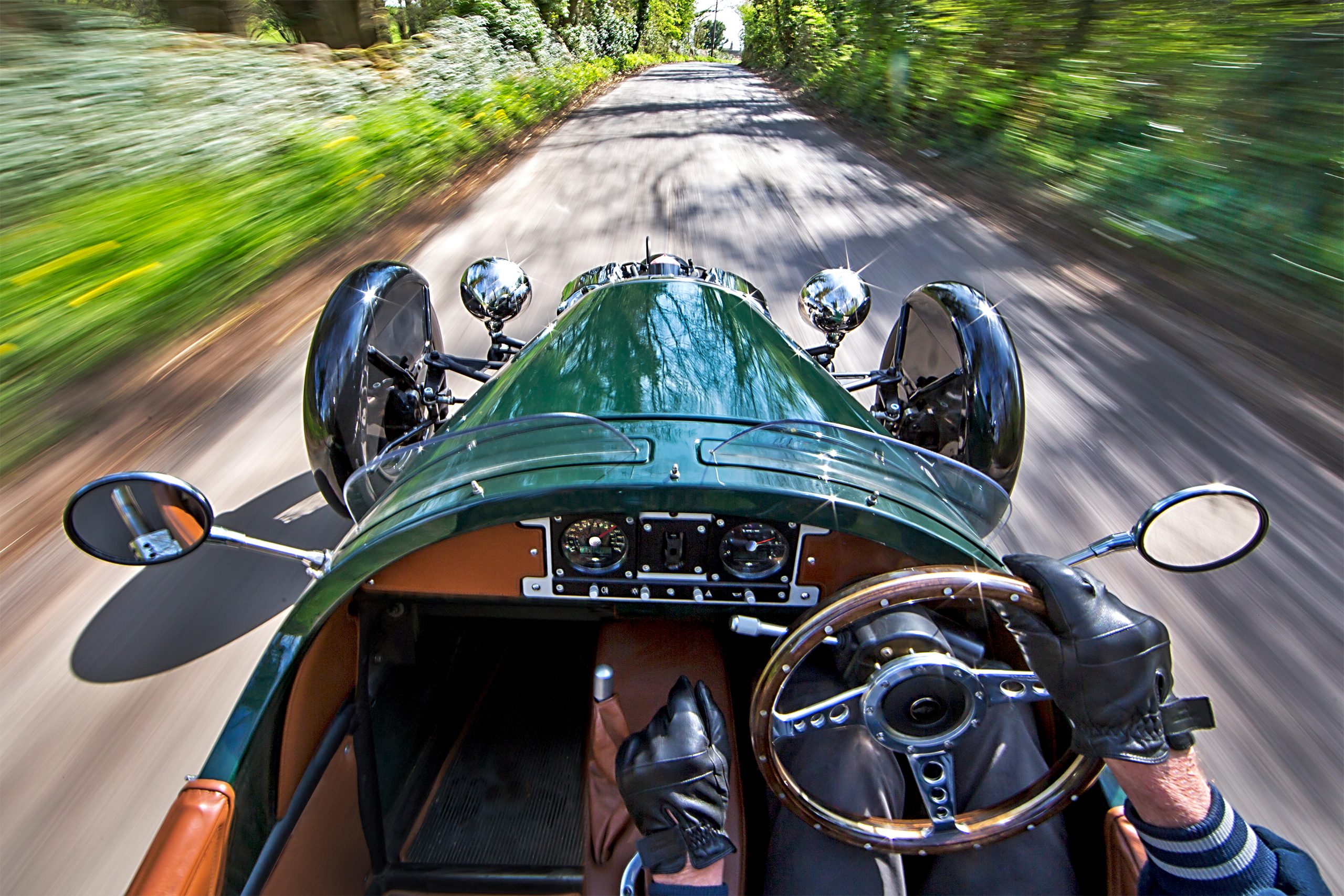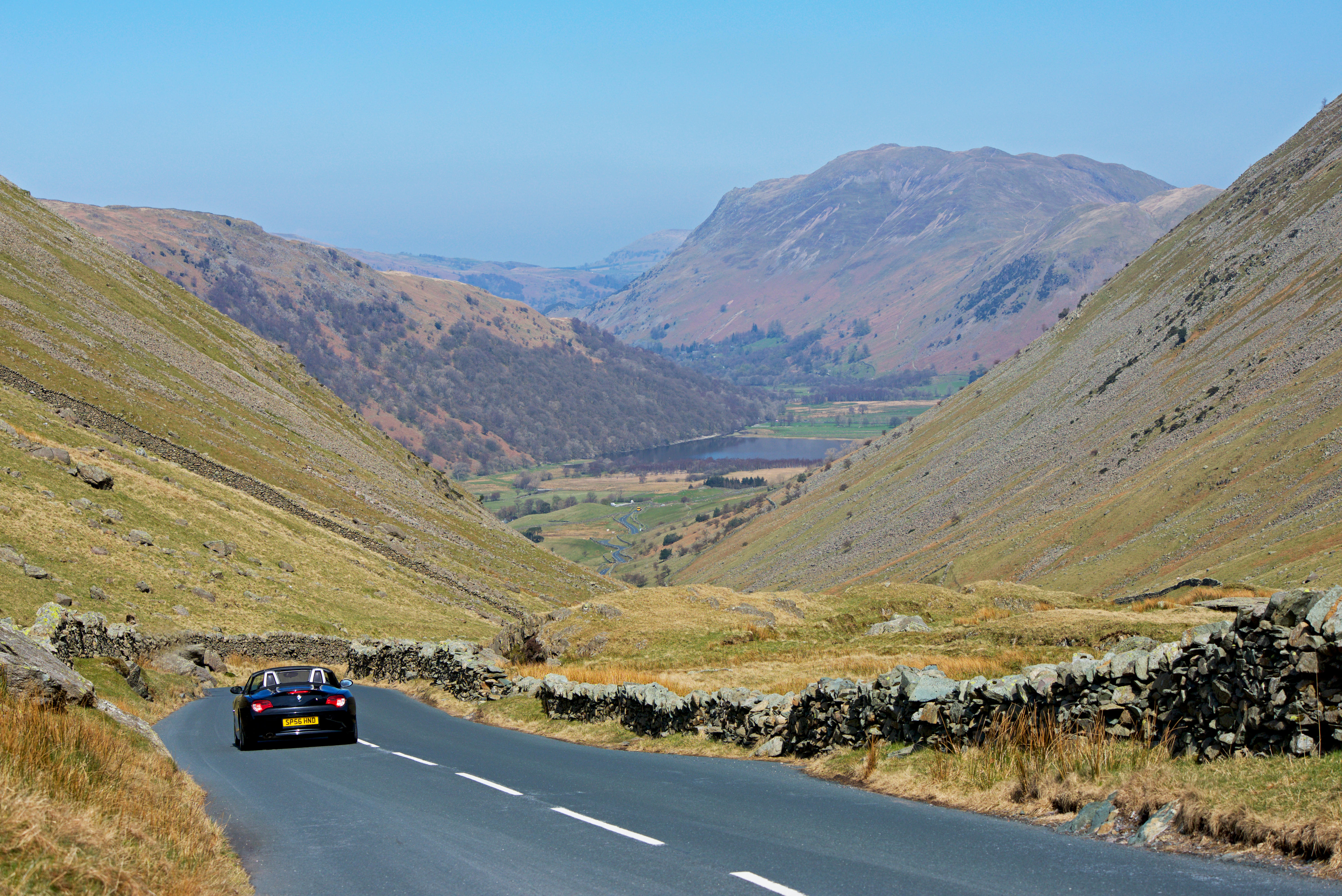Curious Questions: How did a car-mad racing driver come to invent the speed camera?
Speed cameras have been a fixture of British roads for three decades, but they've been around far longer than that. Martin Fone finds out more about how they came about — and, ironically, how it was a speed-loving racing driver who is responsible for their creation.


For most of my working career I considered risk, its identification, quantification, mitigation, and control as well as our appetite for assuming it. Everything we do or encounter in our daily lives involves some element of risk and we make decisions, often subconsciously, balancing the benefits of doing something against the risks we run.
Risks that we have not encountered before — think Covid-19 — generally make us risk averse, anxiously avoiding them as best we can, whilst risks we think we understand or consider to be adequately controlled are accepted as the cost of going about our daily lives.
On the face of it, driving a car is one of the riskier pursuits. In 2018, there were 1,784 deaths on the UK’s roads — of which 58% occurred on rural roads — and 160,597 injuries. However, we rarely give the risks a moment’s thought. Instead we comfort ourselves with the thought that we have reached a certain standard of driving proficiency (compulsory driving tests were introduced in June 1935), that our cars are roadworthy, (MOT tests were mandatory from 1960 for vehicles over ten years old and from 1968 for those three years old or over), and that we are protected from serious injury by seatbelts, (fitted in new cars from 1968, but only made compulsory to wear in 1983) and other safety features the modern vehicle boasts. The introduction of the breathalyser in 1968 has discouraged us from driving under the influence of alcohol and, from 2015, drug driving tests have recognised the dangers of motorists taking the high road.
And then there is speed.
Ever since Karl Benz developed his Motorwagen, the law has attempted to curb the motorist’s speed. In Britain, The Motor Car Act, 1903, set the speed limit at a heady twenty miles per hour, up from the previous limit of 14 mph. For many an aspiring Mr Toad, though, this was still too low, and the opportunity to put their foot down on an empty country road was too tempting to pass up.
The police, however, saw a speeding motorist, even then, as an opportunity to generate some revenue, hiding in hedges and ditches in the hope of catching a malefactor. This practice got the goat of Lord Montagu of Beaulieu, who speaking in the House of Lords on July 19, 1907, described it as ‘extracting money from the passing traveller in a way which reminds one of the highwaymen of the Middle Ages’.
The Automobile Association (AA) was formed, in 1905, partly to protect motorists from speed traps. Patrolmen were instructed to signal to a member — originally recognised by the badge on the radiator grille — to slow down when approaching a speed trap, a practice which led to a court case, Betts v Stevens (1910). The judge ruled that patrolmen were ‘obstructing an officer in the course of his duty’.
Sign up for the Country Life Newsletter
Exquisite houses, the beauty of Nature, and how to get the most from your life, straight to your inbox.
The AA quickly changed tack to retain one of their key selling points. AA patrolmen were now told to salute members from the roadside. However, if motorists were approaching a speed trap, the patrolman would studiously ignore them, the recognised signal to slow down. This rather sporting practice persisted until the 1960s.
"Gatsonides had a brainwave. He realised that the device which had helped him improve his velocity was perfect for agencies seeking to enforce speed limits"
The one place where speeding is positively encouraged is the racetrack, and that’s where a racing driver and engineer named Maurice Gatsonides enters the story. Born in Java in 1911, he moved to Holland with his family where and in the 1930s he embarked upon a successful career as a rally driver — the high point of which would eventually be winning the 1953 Monte Carlo Rally in a Ford Zephyr.
An engineer, Gatsonides was obsessed with using his technical know-how to enhance his speed, developing, in 1938, a device which, connected to the speedometer, allowed him more easily to drive at a pre-set average speed. As part of his research, Gatsonides also went on to produce a pulse-counting machine which calculated the speed of a vehicle travelling between two parallel rubber tubes laid across the circuit.
He might never have developed that idea any further had it not been for a turn of misfortune. In 1949 he’d invented an aerodynamic vehicle, the Platje, which beat all comers at Zandvoort. After getting into financial difficulties trying to put it into production, he had to sell it to meet the demands of his creditors.
Looking around for his next idea, Gatsonides had a brainwave. He realised that, ironically, the speed calculating device which had helped him improve his velocity was perfect for agencies seeking to enforce speed limits. By 1958 he had retired from competitive sport and formed a company, Gatsometer B.V.
He started demonstrating his pulse-counting, speed recording device — known as a Gatsometer or Gatso — to local Dutch police forces. He and his son soon picked up speeding fines like they were going out of fashion, as they had to break the law to prove that the device was working.
The police, who hitherto had used stopwatches to time motorists driving between two predetermined points — an inaccurate process at best and one open to challenge — quickly saw the merits of Gatsonides’ idea. The Gatso was soon adopted throughout Holland, the first country to do so, and a measure of its success was the fury it generated amongst Dutch motorists who, caught by Gatsonides’ infernal device, had little room for argument.
Gatsonides did not stop there. In 1964 his company developed a speed camera and, in 1971, radar detectors — they were possibly the first in the world, although that claim is disputed. In 1982, they produced the world’s first mobile speed traffic camera.
Britain was a relatively late adopter of the Gatso cameras. The first one was a traffic light camera installed at a junction in Nottingham in 1988, following a horrific road accident which resulted in three fatalities. The first speed camera, a Gatso, was installed in 1992 on the westbound A316 over Twickenham bridge, under the direction of Roger Reynolds, a traffic division sergeant of the Metropolitan Police. The speed limit in the area was 40 mph but, rather generously, the trigger point for the camera was set at 60 mph. Even so, in the first 22 days of its operation, 22,939 drivers were clocked driving at speeds greater than 65 miles per hour.
The southbound A 406 at its junction with the A40 Western Avenue at the Hanger Lane Gyratory was the site of the first controlled junction, followed swiftly by a camera installation on the A501 Marylebone Road at its junction with Gloucester Place. The number of accidents reduced significantly. England and Wales may have been slow adopters of cameras, but by 2007 there were 4,737 in operation, of which 2,462 were Gatsos. That proved to be the camera’s zenith in Britain.
While the presence of cameras had the desired effect of reducing drivers’ speeds, revenues from fines were declining fast. To counteract the trend, the trigger point for cameras was reduced from Reynolds’ magnanimous 50% to less than 10%. Shades of Lord Montagu of Beaulieu’s highwaymen. Even though more sensitive cameras ran the risk of alienating motorists, leading a self-styled Captain Gatso to form a group called Motorists Against Detection (MAD), generally they have been accepted, with approval rates rarely falling below two-thirds. Most importantly, they seem to work: road fatalities in Britain have halved since their introduction, and that can only be a good thing.
As for their inventor, Gatsonides, his story is replete with irony. He was often a victim of his own invention, picking up fines for speeding with gay abandon. Phlegmatically he commented, ‘even I cannot escape my own invention, because I love speeding’. Twas ever thus — the engineer hoist by his own petard.

Curious Questions: Why do the British drive on the left?
The rest of Europe drives on the right, so why do the British drive on the left? Martin Fone, author

Credit: Getty Images
Curious Questions: What did people use before toilet paper?
The mania for the humble toilet roll that has accompanied the coronavirus has our columnist Martin Fone musing on where

Credit: Alamy
Jason Goodwin: The dogs who bounded off down the drive one summery evening, never to be seen again
Our columnist tells a sad tale which brings to mind his own pain at losing a pair of dogs, who
After graduating in Classics from Trinity College Cambridge and a 38 year career in the financial services sector in the City of London, Martin Fone started blogging and writing on a freelance basis as he slipped into retirement. He has developed a fearless passion for investigating the quirks and oddities of life and discovering the answers to questions most of us never even think to ask. A voracious reader, a keen but distinctly amateur gardener, and a gin enthusiast, Martin lives with his wife in Surrey. He has written five books, the latest of which is More Curious Questions.
-
 'To exist in this world relies on the hands of others': Roger Powell and modern British bookbinding
'To exist in this world relies on the hands of others': Roger Powell and modern British bookbindingAn exhibition on the legendary bookbinder Roger Powell reveals not only his great skill, but serves to reconnect us with the joy, power and importance of real craftsmanship.
By Hussein Kesvani
-
 Spam: The tinned meaty treat that brought a taste of the ‘hot-dog life of Hollywood’ to war-weary Britain
Spam: The tinned meaty treat that brought a taste of the ‘hot-dog life of Hollywood’ to war-weary BritainCourtesy of our ‘special relationship’ with the US, Spam was a culinary phenomenon, says Mary Greene. So much so that in 1944, London’s Simpson’s, renowned for its roast beef, was offering creamed Spam casserole instead.
By Country Life